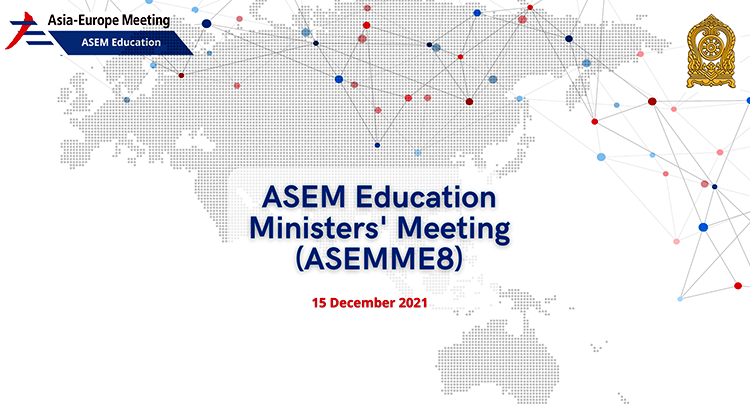Education ministers from Asia and Europe have agreed to increase and enhance balanced mobility of students, researchers and staff between the two regions, with the global pandemic providing the impetus for new forms of mobility including virtual and ‘hybrid’ exchanges based on newer themes such as the Sustainable Development Goals (SDGs).
The need to continue inter-regional higher education connectivity despite two years of travel restrictions due to the COVID-19 pandemic was part of the push by ministers at the eighth ASEM (Asia-Europe Meeting) Education Ministers’ Meeting – ASEMME8 – hosted online by Thailand’s Minister of Education, Treenuch Thienthong, on 15 December to inject new momentum into higher education cooperation between the two regions.
Around 120 ministers and senior officials from 50 countries took part including the 27-member European Union and the 10-member Association of Southeast Asian Nations (ASEAN), as well as university groups, non-governmental organisations and other stakeholders.
ASEMME has been held every two years since 2008 to monitor the progress of cooperation in higher education between Asia and Europe, but for the first time ministers also endorsed longer-term goals outlined in the ASEM Education Strategy and Action Plan 2030, which Treenuch described as “a new dawn for our cooperation”.
Ministers frequently talk about ‘balanced mobility’, with student exchanges heavily skewed towards Asian students going to Europe, he said. “It might be the case that they want balanced exchanges by relating it to sustainability issues.”
Another priority is work experience, with student mobility programmes being set up around this. “This is perhaps the number one priority for Southeast Asian governments – they are worried about how they can facilitate their graduates to learn continuously and adapt to the workplace with so-called 21st century skills, particularly when we are hit with the pandemic.”
ASEM ministers agreed on an intensified dialogue between education, business and industry within and between Asia and Europe and to remove obstacles to work placements across the two regions. They also pushed for experiences that combine professional competence development with intercultural learning.
Source: https://www.universityworldnews.com/post.php?story=20211217085508703

